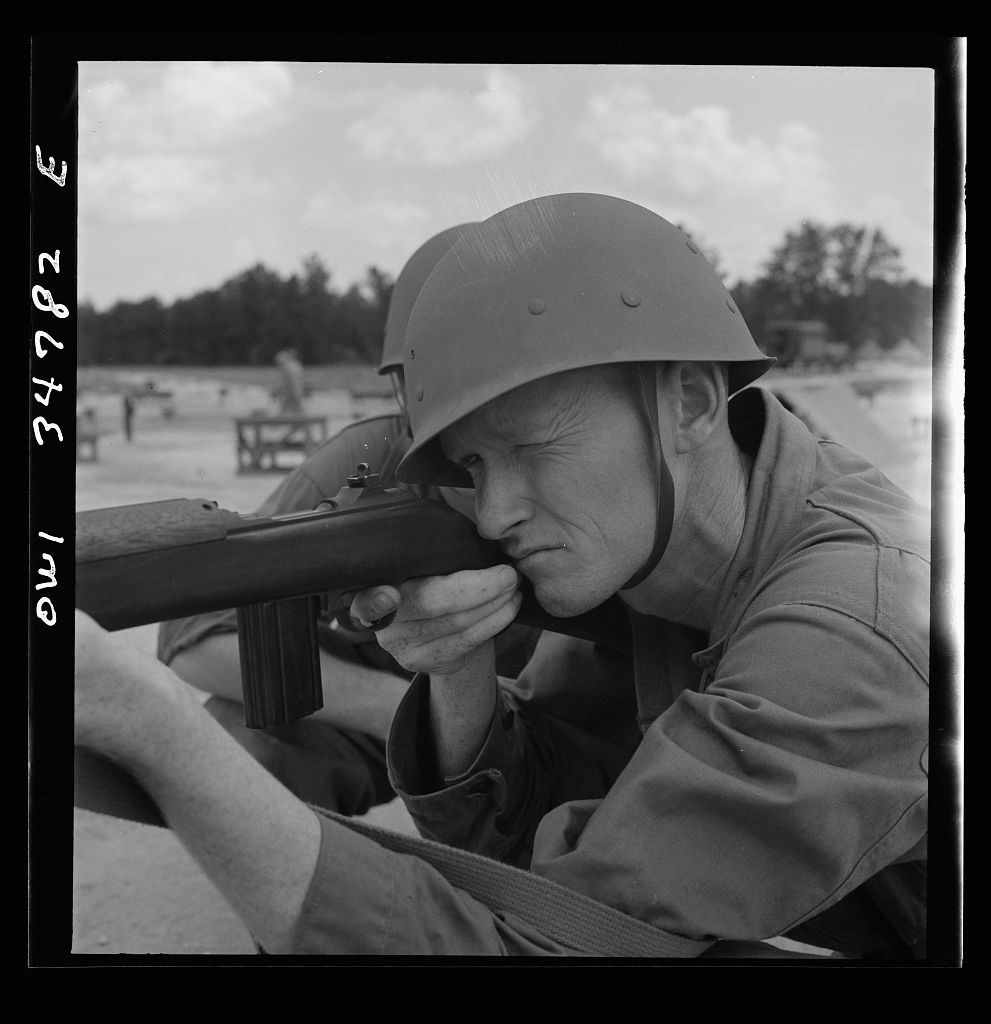
The Photogrammar Project
President Franklin Delano Roosevelt's New Deal programs faced severe criticism from rival political factions during the Great Depression. In an effort to build public opinion, and to document the struggles of Americans intended to be helped by New Deal programs, the Information Section of the Resettlement Administration (later moved to the Farm Security Administration, and with the America's entry into World War II, the Office of War Information, i.e. "FSA-OWI") sent photographers including Dorothea Lange and Walker Evans, around the country to capture images of the American people. The project was responsible for some of the most iconic images of the Great Depression and resulted in over 170,000 photographs that are housed and maintained in the Library of Congress. [1]
In the 1990s the Library of Congress began digitizing the images and cataloging them online, but the system was hard to use and felt almost inaccessible to some researchers. [2] Lauren Tilton, a student at Yale who was using the FSA-OWI database for research came up with the idea of organizing the photos by location, date, or photographer. Together with her professor, Laura Wexler, she formed the team a Yale that created Photogrammar. [3]
Made possible by a grant from the National Endowment for the Humanities, Photogrammar debuted in October 2014 and by March 2016 had over 8 million page views from 600,000 users in 145 countries and 6 continents. [4]
While the majority of the photographs available on Photogrammar were taken before America's entry into the Second World War, there are hundreds of photographs of the Armed Forces and war-related themes.
Examples of Images on the Database
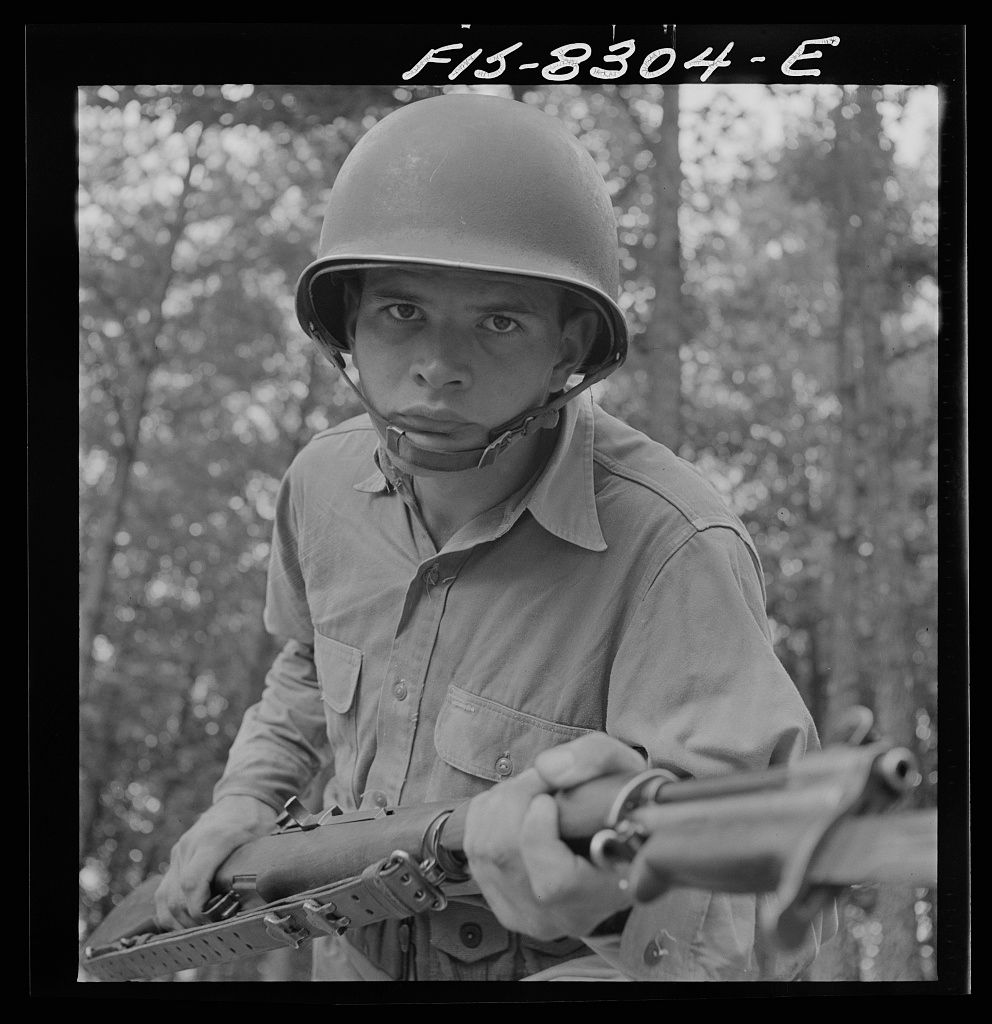
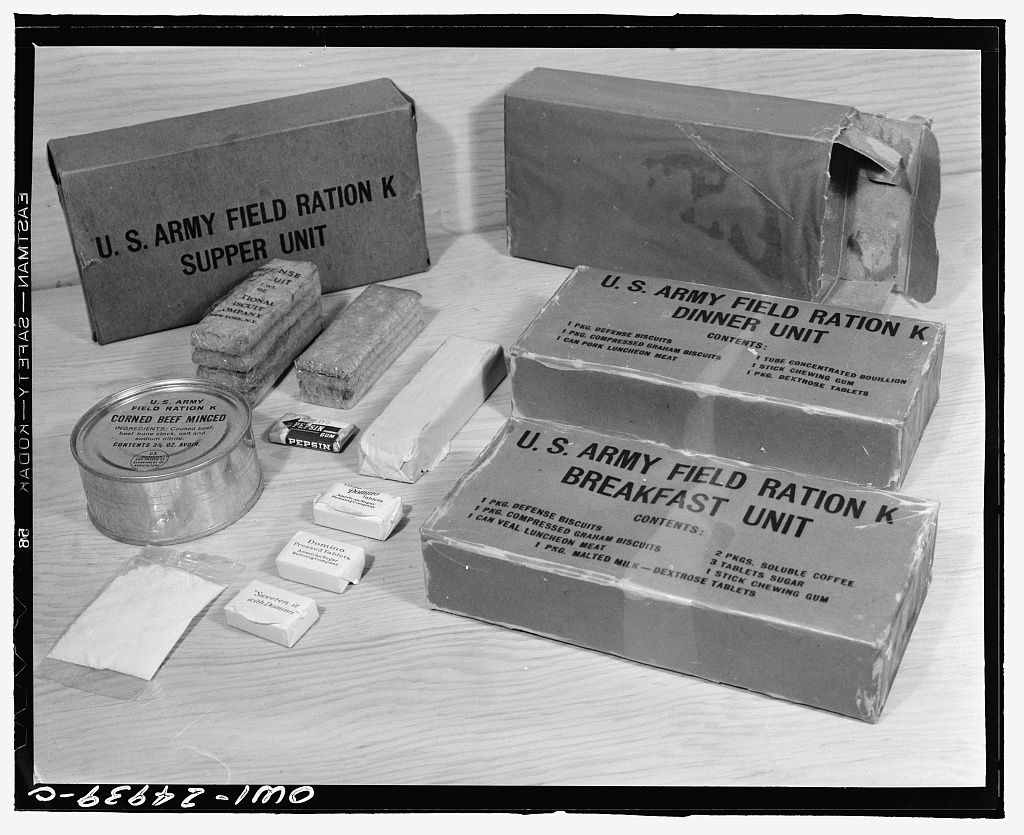
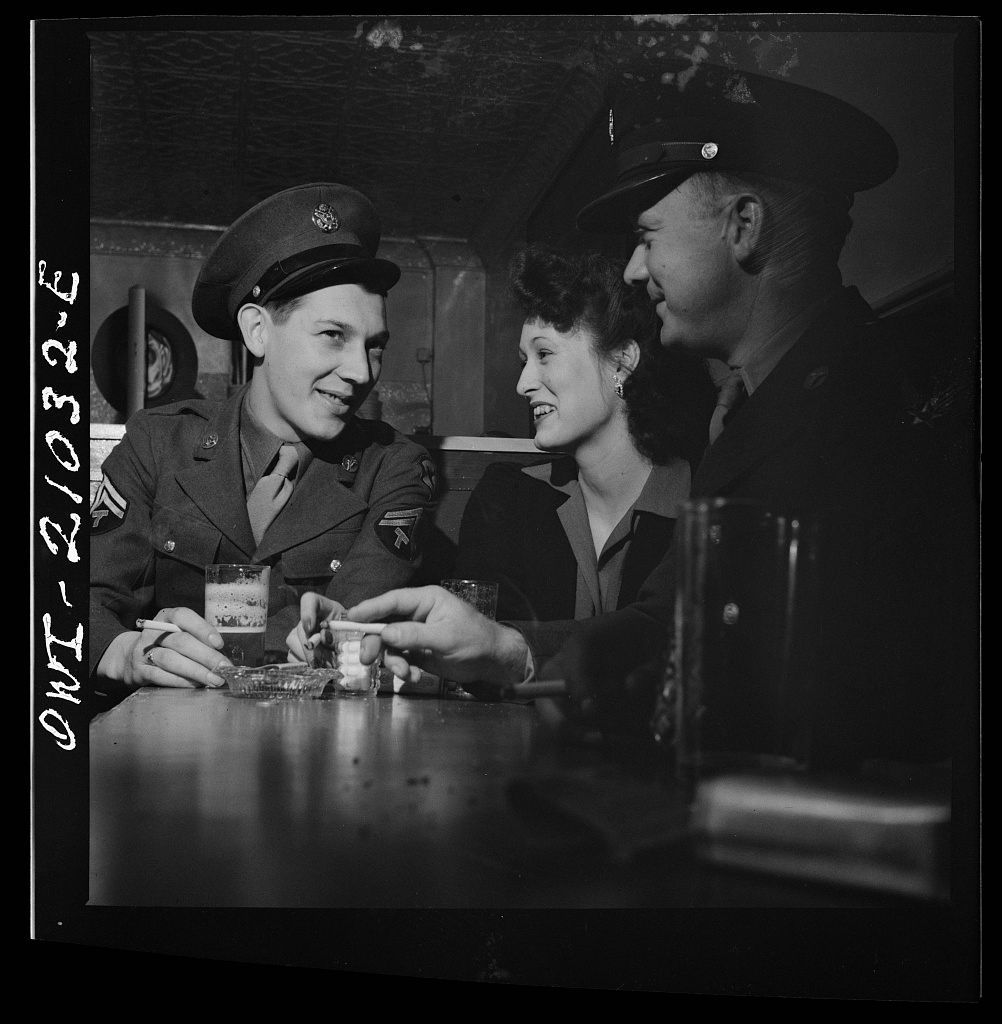
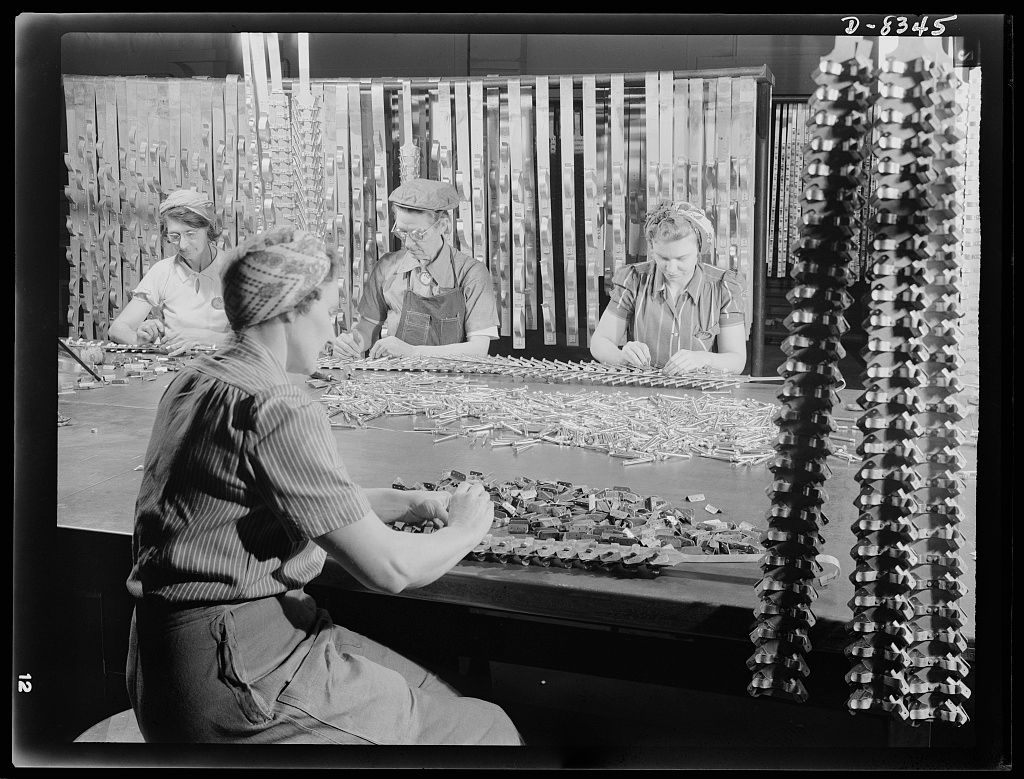
Searching the Database
Other than the standard keyword search function, the Photogrammar website provides users with several easy to use and intuitive methods of accessing photographs from the FSA-OWI collection.
The first is an interactive map that can narrow results based on the, photographer, year, and the location (by county).
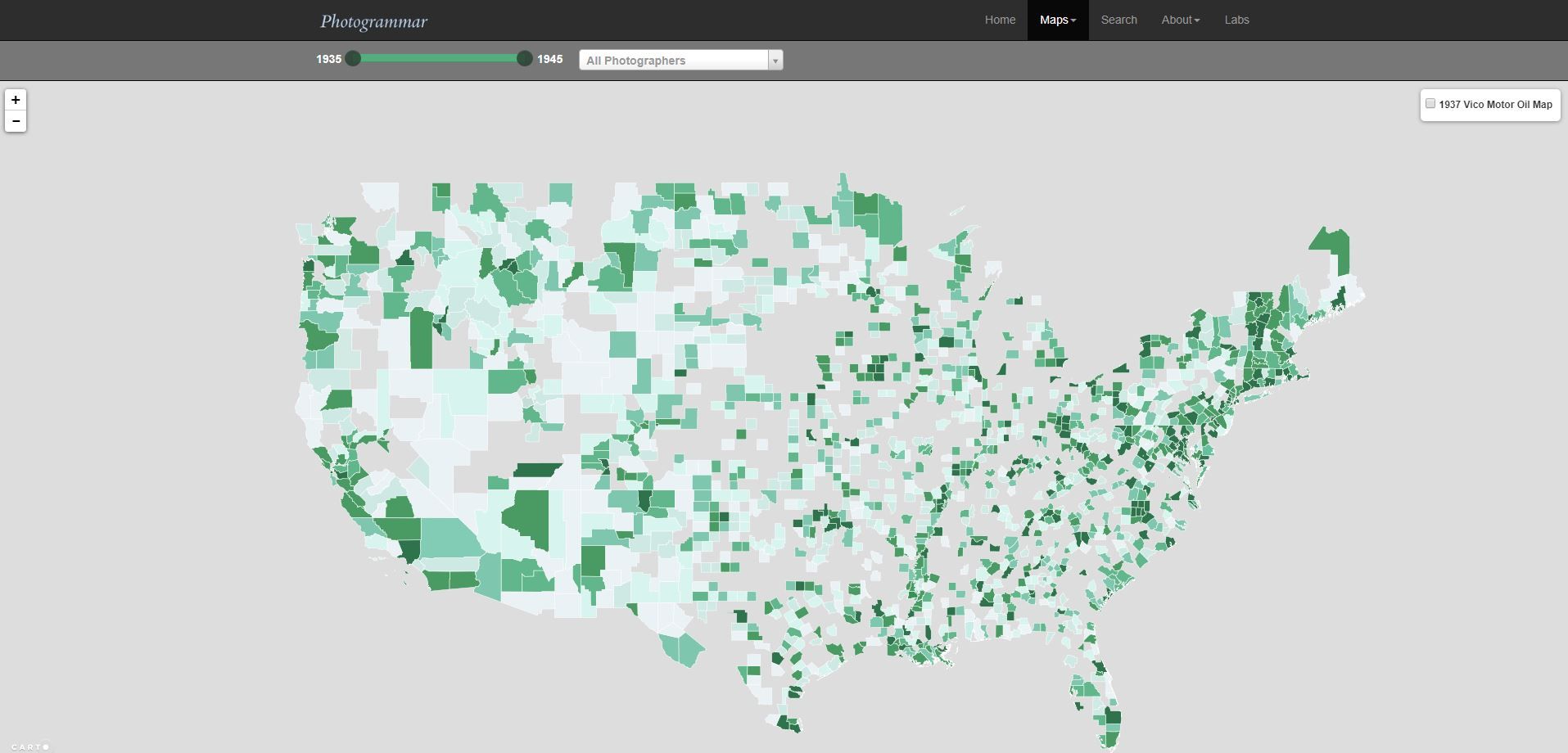
The second, called the "Treemap", is visualization and modern update of the original classification system created by Paul Vanderbilt, who first organized the collection for the FSA-OWI in 1942. The "Vanderbilt System" cataloged prints based on classification and lot, wherein photographs were cataloged by geographic location, theme, and photographer. The Vanderbilt System was in essence, an early form of "tagging." [5]
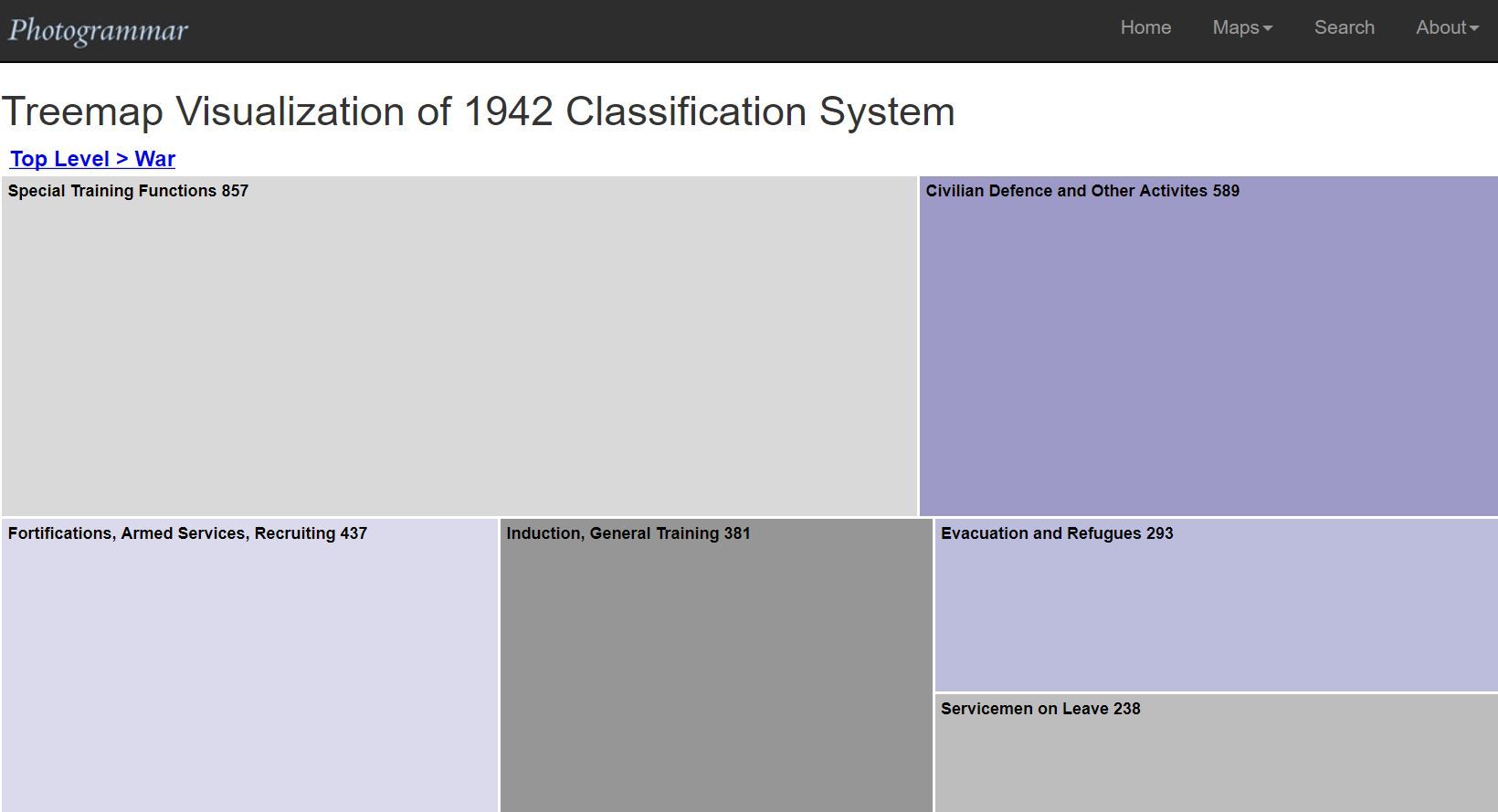
The Photogrammar project is still ongoing, and there are several other search functionalities still in development including "ColorSpace" (for searching by color) and Metadata Dashboard (which will better correlate images and data for individual states). [6]
How to Get the Most out of the Database
Once you identify an image you want to use you can click on the Library of Congress Call Number in the left hand margin and be automatically re-directed to the page for the image on the Library of Congress website. The Library of Congress site typically has more detailed information that can be used for citation, and more importantly, high resolution versions of the image that are better suited for publication.
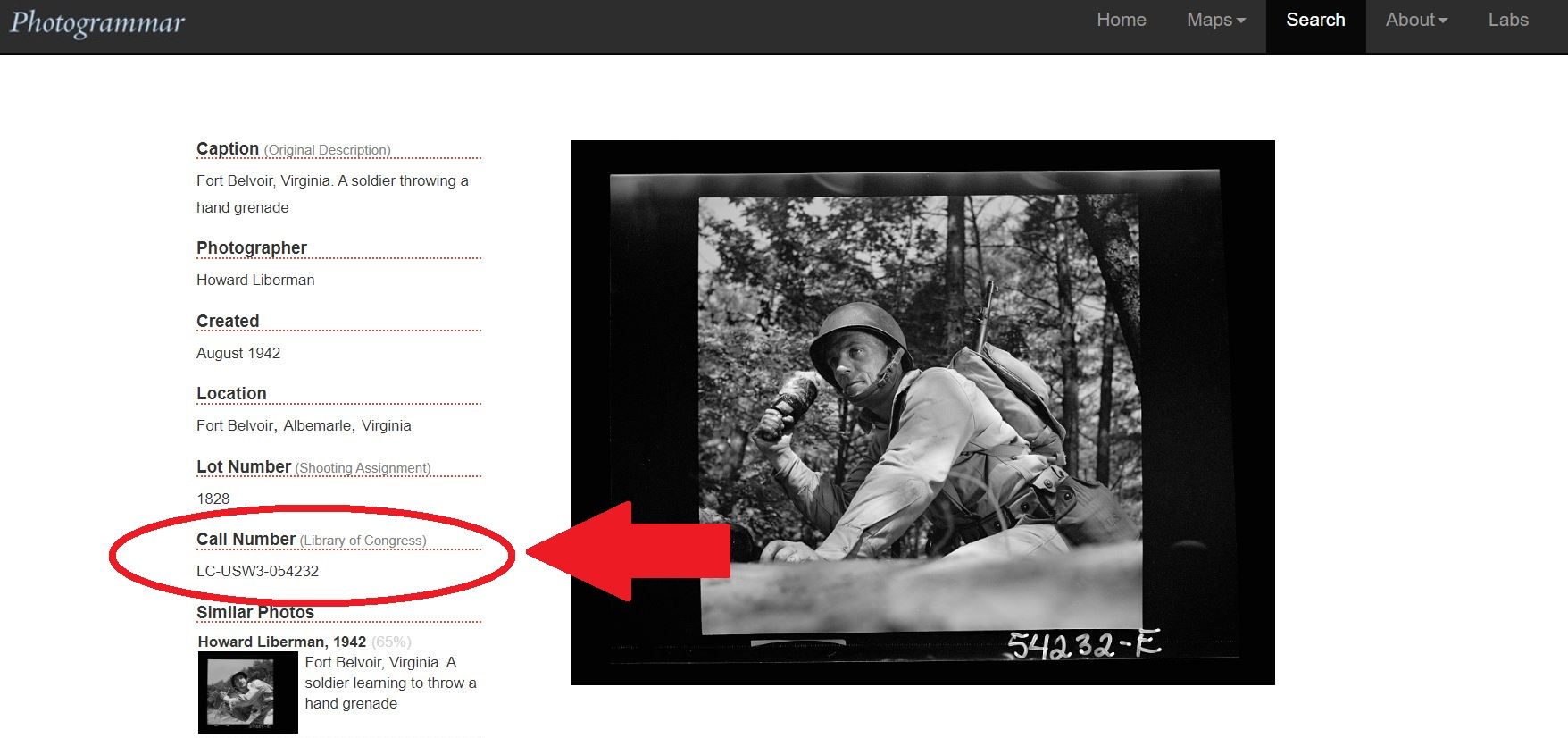
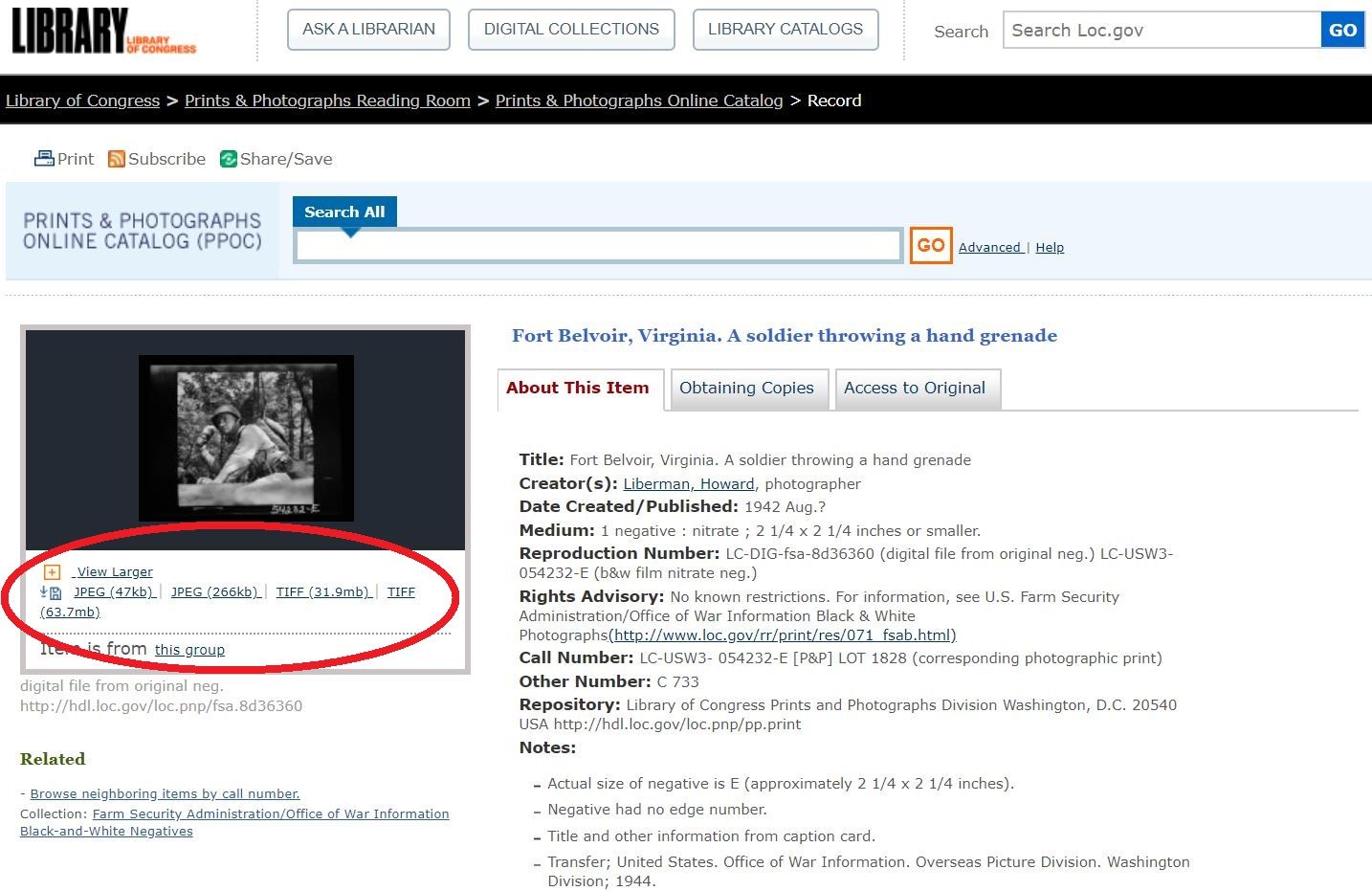
The Future Potential
Photogrammar is best example of how modern technology can take historical documents that are inaccessible in archives and make them readily available for researchers everywhere.
The same methodologies, e.g. mapping based on photo location and tagging by photographer or theme, could be applied to collections of World War II photographs. It would be remarkable if the World War II U.S. Army Signal Corps collection the National Archives was digitized along the lines of Photogrammar, but the sheer size of that collection makes it unlikely to ever happen. What would still be appreciated, and is much more feasible, is for smaller databases like the George C. Marshall Foundation's Signal Corps photo collection or the PhotosNormandie Flickr page (which has already created albums for some locations) to create interactive maps so all of the photographs taken in St. Lo, France, for instance, are easily sorted and organized by date, or to use treemaps to organize photographs by keywords like "rations", "foxhole", or "tank". It will be interesting to see if projects like Photogrammar emerge for the many existent World War II photographic collections.
Footnotes
[1] "The FSA-OWI," Photogrammar, Yale University, accessed October 17, 2019, http://photogrammar.yale.edu/about/fsa_owi/
[2] "Depression-Era Photos Make A Mark In American Photography," Morning Edition, National Public Radio, September 2, 2014, accessed October 17, 2019, https://www.npr.org/2014/09/02/345158378/depression-era-photos-make-a-mark-in-american-photography?
[3] Ibid.
[4] "Photogrammar Project," National Endowment for the Humanities, accessed October 17, 2019, https://securegrants.neh.gov/publicquery/main.aspx?q=1&a=0&n=0&o=0&k=1&kv=photogrammar&kj=or&w=0&f=0&s=0&p=0&d=0&y=0&prd=0&cov=0&prz=0&wp=0&pg=0&ob=year&or=DESC ; Laura Wexler, "White Paper," National Endowment for the Humanities, accessed October 17, 2019, https://securegrants.neh.gov/publicquery/Download.aspx?data=EbwGdSyLkD7zoB3W75cvd%2BXST%2BWypC%2Bl0h%2F84KNExgdWHkj8yCC2P8F%2BJRZSo42gWUHJ%2BLJCzw%2BkkB1%2FIgvPxJYOSRibS8hRpB0N0QIqVy0o%2Fdojd57Q27QbTyrrFLlm%2FHzvd80%2BiUO4nb3qA3VgUw%3D%3D
[5] Taylor Arnold, Stacey Maples, Lauren Tilton, and Laura Wexler, "Uncovering Latent Metadata in the FSA-OWI Photographic Archive," DHQ: Digital Humanities Quarterly 11, No. 2 (2017), accessed October 17, 2019, https://statsmaths.github.io/pdf/2017-latent-metadata.pdf
[6] "Photogrammar Labs," Photogrammar, Yale University, accessed October 17, 2019, http://photogrammar.yale.edu/labs/#